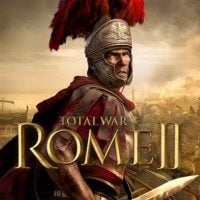Total War Rome 2: Interface
After starting the game you are moved to the strategic map. The ancient world is divided into dozens provinces (e.g. Italy or Magna Geaecia) and these are divided into smaller regions. Each region consists of central city with surroundings lands. An example could be Rome, Naples or Velathri.
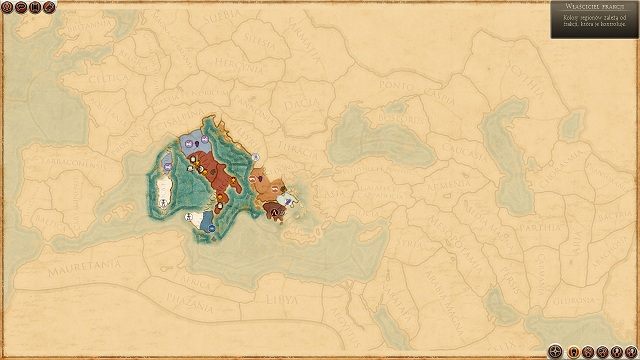
When you select any town, you'll get a province management screen. The biggest city (it is always placed on the left side of the list) is always the capital of the given area and remaining settlements are its subordinates.
Regions under your control always show a list of existing buildings. Neutral locations have a gray background and region under control of enemy factions are red. If our spy was located near the enemy city, we'll get an access to the intelligence screen - it is enough to move the mouse cursor over the eye icon in the upper-left corner of the region screen (shown on the below screen). In addition, under each discovered location you can see icons of fortress and ship - when you move mouse over them you can get information about number of troops in the local garrison.
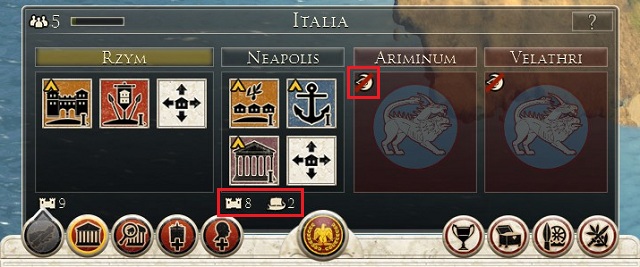
If you control at least one region in the province, there is a development bar in the upper-left corner of the screen - this is a surplus of population which can be directed to any of our cities in order to grow it larger.
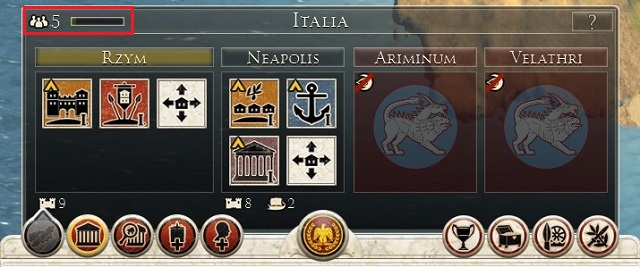
After pressing 2 key you can get to the details of the province. Fields Wealth & Income allows checking earnings in each region - when you move mouse over city name, you'll get more details. In addition you can see how taxes, slaves and corruption affect your income.
Public order measures the level of satisfaction of residents in the province. Both taxes and slaves affect it, as well as agents, particular buildings or invented technologies. Also other cultural circles (or their absence) can affect this factor. Once you move mouse over the bar, you'll get more detailed information.
Culture screen shows influence of other cultures on your province. Same as with previous case, when you move mouse over the icon representing the particular cultural circle, you'll see more detailed information.
Security of the province shows the resistance to enemy agents' attacks. The higher the values the less chance of success by the hostile character.
Tax province option, visible in upper-left corner, allows you to tax on/off the province. If it is off, the public order increases.

Short list of this information can be seen in the bottom-left corner of the main screen. There is information on public order and culture, food production, income and various effects affecting your province.
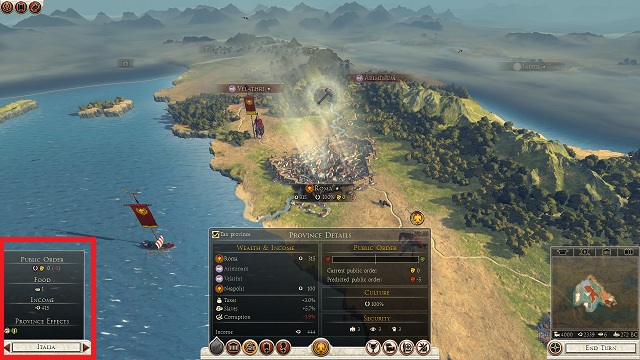
It is worth mentioning, that as long as you have an excess of food in your empire, it will be evenly distributed among all provinces. Problems start when the production is not keeping pace with consumption. In this case provinces which were importing the food begin starving public order decreases and soldiers slowly desert from the army. Therefore I suggest that each province is self-sufficient.
You are not permitted to copy any image, text or info from this page. This site is not associated with and/or endorsed by the developers and the publishers. All logos and images are copyrighted by their respective owners.
Copyright © 2000 - 2025 Webedia Polska SA for gamepressure.com, unofficial game guides, walkthroughs, secrets, game tips, maps & strategies for top games.
